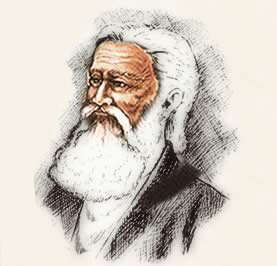The Life of Rahman BabaDespite the persistence of enchanting oral traditions, Kamil’s comment that “the circumstances of Rahman Baba’s life lie very much in the dark” is still the most apt summary of what we know about the life of Abdul Rahman Baba. The uncertainty about his life is increased by the lack of any eyewitness accounts, and is compounded by the enthusiastic cultivation of hagiographic legendThe legend portrays Rahman as a reclusive poet, scratching his poems in the mud of the Bara river, while strumming a rebab. At times he is overcome by a single note, and falls unconscious as tears wound his cheeks. Rahman is found in the company of a young boy named Mujnoon, with whom he elopes. Some of these oral traditions have become enshrined as accepted fact among Pushtuns, and many are repeated in books without consideration of their authenticity. Below is some information about Rahman Baba that is based on evidence from the Diwan. Rahman’s BackgroundLineage is of great importance in tribal societies, and Rahman leaves us in no doubt about his own Pushtun pedigree. Rahman claims to be of the Sarban tribe, who are recognized as the ‘true Afghans’ because they can trace their ancestry back to the eldest son of the putative Pushtun ancestor Qais. The Sarban tribe originated in Kandahar, and migrated into the Peshawar valley from the thirteenth to the sixteenth century. This period of history was characterized by a fierce rivalry between the different branches of the tribes.Rahman was a Mohmund, of the Ghoriah khel (tribe), who lived in a small pocket of Mohmand settlers on the outskirts of Peshawar. From 1550 A.D. the Yusufzai tribe had come to dominate the area, following the defeat of the Ghoriah Khel in the battle of Sheikh Tapur. Rahman apparently lived peacefully in the area, and never mentions his involvement in these inter-tribal conflicts. Opinion is divided about Rahman’s family background. Several commentators are convinced that his family were village maliks (chieftains), while Aqab finds no evidence for this view. Whether malik or not, Rahman describes himself as a poor man: “May no one be without life and livelihood, As I am lifeless and penniless. Though the wealthy drink water from a golden cup, I like this clay bowl of mine. ” There is no specific mention of family members in the diwan, but there has been speculation about the identity of Aziz Khan, who has been variously identified as Rahman’s brother, or the Malik of Bahadur village. Other unsupported stories claim Rahman’s father was named Abdul Sattar, and that offspring of his own daughter’s family are still living in the village today. |

Rahman’s VillageThere is agreement that Rahman lived and died in the area to the southwest of Peshawar, along what is now the outer ring-road of the city. His birth-place was Bahadar village, but he also lived in Hazarkhani. Oral tradition maintains that he moved to Kohat, and that he wandered as far as India.As several have noticed, internal evidence from the diwan refutes the view that Rahman traveled. It seems likely that Rahman spent his whole life in his own village, as he himself claims: “I can swear to the fact that I do not move from my place, nor am I thankful to any creature whatsoever for anything. Neither have I seen countries down or up. My home is in the village, I don’t consider it a home, but a desert grave. ” Rahman’s DatesSince Rahman lived in relative obscurity, the exact dates of his birth and death are not known. Approximate dates can be deduced from two historical events mentioned in the Diwan. Rahman’s date of birth can be calculated from his mention of the end of the reign of the Mughal king Aurangzeb (1659-1707 A.D.). In D46/24 he mentions his age as being ‘past 55’, and later in the same poem he refers to the accession of Shah Alum to the throne:“This was the name of Aurangzeb, a chapter eaten by a cow. Now is the turn of Shah Alum, a different time and style.” Since Shah Alum took the throne in 1707 A.D., and as Rahman is as he states ‘at least 55’, that would put Rahman’s birth at no later than 1652 A.D. It would be speculative to guess just how old ‘past 55’ implies, but it would seem to rule out the date of 1632 A.D. given in Puta Khazana. If Rahman had been born then, he would have been more likely to have said ‘past 75’. In a similar vein, the birth-date of 1653 A.D. given by Enevoldsen is wrong by at least a year (by simple subtraction). It is unlikely that Rahman was over 60 when he claimed to be ‘past 55’, and if this assumption is correct, then his birth date lies somewhere between 1647 and 1652 A.D. The date of Rahman’s death is linked with poem D 102. In it he tells of the brutal revenge killings of Gul Khan and Jamal Khan, who were burnt alive with an entire wedding party. According to Raverty this event took place around 1711 A.D. Many commentators assume that Rahman’s death was also around this time, though there is no evidence that he died then. All that can be said is that he was still alive in 1711. He could well have lived for several more years. A reasonable conclusion from these two events in Rahman’s life, is that his dates are approximately 1650 – 1715 A.D. |
